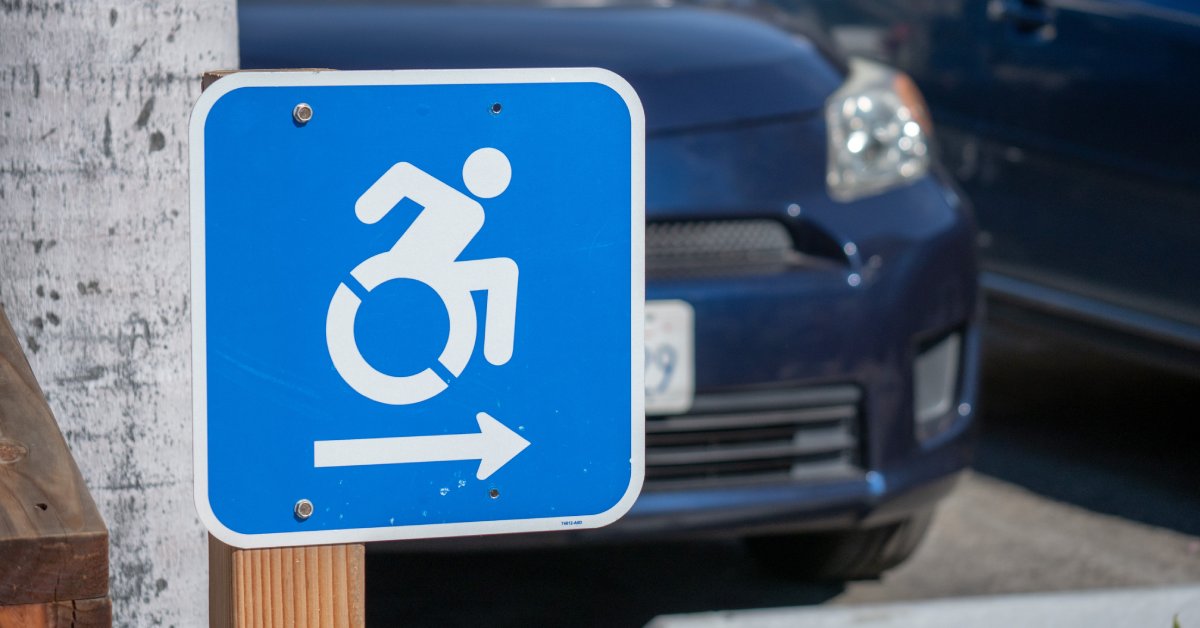Ensuring your parking lot meets the standards set by the Americans with Disabilities Act (ADA) is more than a legal responsibility. It’s an opportunity to create an accessible space for everyone. This complete guide to ADA compliance for parking lots will help you understand the essential requirements and ensure every aspect of your space supports inclusivity.
Pavement Requirements
The foundation of an ADA-compliant parking lot starts with properly maintained pavement. Surfaces that appear only slightly uneven to the average person can present significant barriers for those using mobility devices. Addressing such issues ensures your parking lot remains safe and easily navigable.
Sloping
Flat, even surfaces are crucial in making a parking lot accessible. The ADA requires that accessible parking spaces do not exceed a slope of 1:48 in any direction.
When slopes are too steep, it can make it difficult for wheelchair users to enter or exit vehicles safely and pose challenges for those with limited mobility. By adhering to these requirements, you provide a safer experience for everyone.
Potholes and Other Damage
No one appreciates the inconvenience of navigating around potholes. For someone using a wheelchair, walker, or cane, even small pavement defects can cause tipping hazards or make navigation impossible. Potholes and other damages not only create hazards but also violate ADA regulations. Regular inspections and timely repairs should be a priority to protect your business from potential liability while maintaining ADA compliance.
Accessible Parking Spaces
Designing the correct number and type of accessible parking spaces is an aspect we could not overlook in a complete guide to ADA compliance in parking lots. It goes beyond simply allocating a few spaces. It’s about strategically locating and designing them to suit the needs of all individuals.
Amount
The ADA provides clear rules on the number of accessible parking spaces needed based on the total size of the parking lot. For example, a lot with 25 spaces must include at least one accessible spot. Larger lots, such as those with 200 spaces, require at least six accessible spaces, including one designated for van access. These aren’t just arbitrary numbers; they reflect the real-world needs of your community and customers.
Location
Parking spots for individuals with disabilities should be as close as possible to the business entrance to minimize travel distances. Accessible routes should connect the parking space directly to the building’s entrance. Avoid obstacles like curbs or stairs that could hinder access when creating pathways.
Size
Accessible parking spaces must be at least 96 inches wide. This additional space allows for vehicle doors to open fully, accommodating wheelchair transfers. Each accessible space must have an adjacent access aisle that’s a minimum of 60 inches wide to ensure easy entry and exit. For van-accessible spaces, the access aisle must be at least 96 inches wide to accommodate larger vehicles, wheelchairs, and lifts.
Signage

Accessible spaces should be clearly marked with visible signs featuring the International Symbol of Accessibility. You can also include this in the striping on the pavement. While pavement markings help, vertical signage mounted at least 60 inches from the ground is required by law. This provides visibility from a distance, helping drivers locate accessible parking before entering the lot.
Striping Standards
Properly marked spaces not only help drivers and pedestrians navigate with ease but also guarantee that accessible spaces are readily available and functional for those who need them most. Well-maintained striping protects your business from potential ADA violations while creating an orderly, professional appearance for your parking lot.
Color Guidelines
Maintaining appropriate striping colors is essential to highlight accessible spaces effectively. While different states may have their own regulations, blue remains the universal color for outlining accessible parking spaces and access aisles. Bright white or yellow may also work for additional markings, increasing clarity for drivers and pedestrians.
Clear Visibility
Over time, the paint in parking lots gradually fades from exposure to harsh weather conditions and the impact of daily traffic. This fading not only diminishes the aesthetic appeal of the parking lot but also compromises its functionality.
Faded striping can make parking spaces and markings unclear, leading to confusion for drivers and pedestrians. Poorly maintained striping might unintentionally infringe on ADA compliance, potentially creating accessibility issues for individuals with disabilities.
Professional re-striping maintains both the appearance and functionality of your parking facilities. This regular maintenance helps drivers and pedestrians navigate the area, locate accessible parking spaces, and demonstrate your commitment to safety guidelines.
Curb Ramps
Curb ramps play a vital role in ensuring accessibility and safety in parking lots by bridging the height difference between parking areas and walkways. According to the ADA, curb ramps must meet specific standards to ensure they are safe and functional for all users.
The slope of the ramp should not be steeper than 1:12, which means every inch of height must correspond to at least 12 inches of ramp length. This gentle incline is essential for wheelchair users and individuals with limited mobility to navigate the space comfortably.
Additionally, curb ramps must include tactile strips or detectable warning surfaces. These textured surfaces assist visually impaired individuals by providing physical cues that indicate the transition from the walkway to the parking area.
Ramp width is also an important consideration. Curb ramps must be wide enough to accommodate wheelchairs, strollers, and other mobility aids. Proper width ensures that users can navigate the ramp safely without feeling restricted.
Furthermore, these ramps must connect seamlessly to accessible routes that lead into the building, creating a continuous, unobstructed pathway.
Keeping It Clean
Regular upkeep is essential for maintaining ADA compliance. Even perfectly designed accessible features become useless when blocked by debris, snow, ice, or leaves. Establishing regular cleaning protocols for accessible spaces demonstrates your ongoing commitment to access while preventing potential liability from slip-and-fall incidents or access barriers.
Regular Inspections
Regularly inspect your parking lot for snowdrifts, ice, debris, or other hazards. Create a maintenance calendar with more frequent checks during winter when snow removal directly impacts accessibility. Documenting these inspections also provides valuable evidence of your good faith efforts to maintain compliance should questions ever arise.
Professional Sweeping Services

Keeping your parking lot clean can be a big job, but that’s where we come in. At CPM Sweeping, we specialize in parking lot power sweeping in Nashville, Tennessee. Our team clears away dirt, leaves, and debris to keep your space looking great and easy to navigate all year round.
A clean parking lot doesn’t just look good; it helps meet ADA standards by keeping walkways safe and accessible. Let us help you maintain a space you can be proud of!

